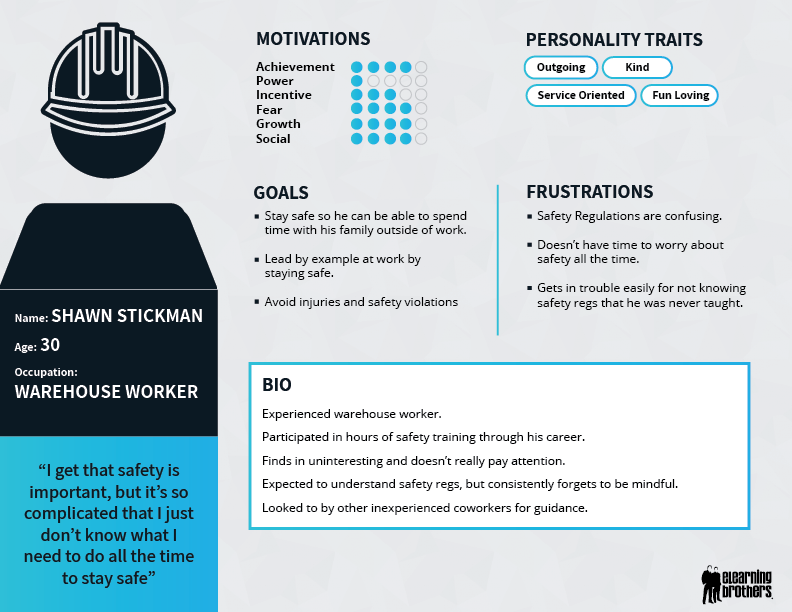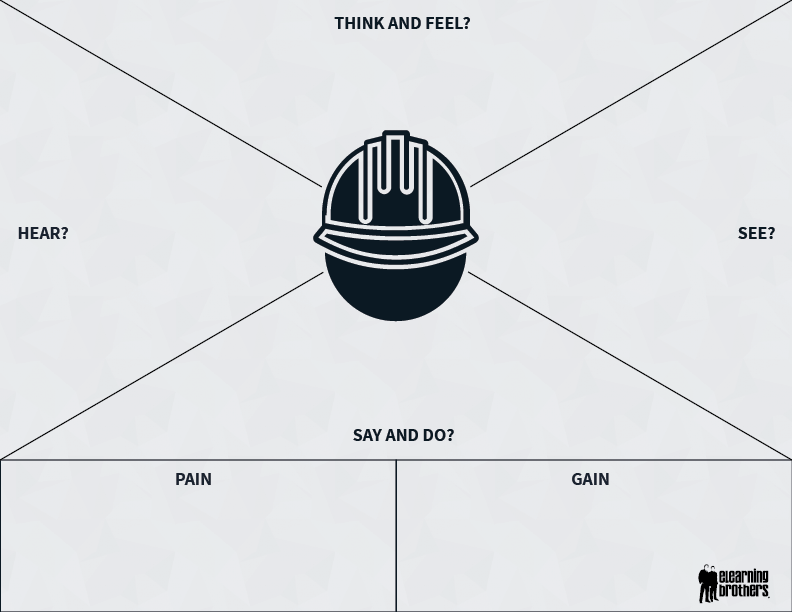As I discussed in my last post, Human Centered Design (HCD) provides us with a valuable process to assist us in empathizing with our learners so we can better meet their needs. For this post, I’d like to focus on the core of how to achieve this—developing empathy for our users.
There are three process and tools that assist us in doing so:
- Learner research
- Learner personas
- Empathy mapping
Let’s take a look at each of these.
Learner Research: AKA Professional People Watching
In order to develop learner empathy, you first need to get to know your user on a somewhat intimate level. Yes, this process is pretty similar to developing a personal relationship, but without a lot of the drama. You need to spend some time with your learner. Talk to them. Ask them questions about their needs and desires. Observe them in their daily tasks in a non-creepy, non-stalkery kind of way. Make sure to be respectful in this process. Note: If HR has to call you in, you are doing it wrong.
I know in a lot of instances you may not be able to observe learners in this way. That’s okay—there are other useful, although not quite as robust, ways to gather this info. You could send out a survey with some questions to your learner group. Obviously, you have some issues with people not responding to you, but it’s a good alternative. You could also talk to other SMEs or people that associate with this group to find out more about them. And never underestimate the power of a simple Google search.
Your ultimate goal in whatever process you are able to use is to get to know meaningful details that help you identify and understand who you are teaching towards. The more information, especially first hand information from observation and interviews, you gather the better off you will be.
Learner Persona: Who is Steve?
Once you gather this info, you have to organize it in a way that’s useful. The best way to do this is by developing a Learner Persona. Personas are a very powerful and useful tool utilized by many departments. Personas are a general representation of a learner group that includes information on learners' goals, struggles, likes, dislikes, behaviors, characteristics, demographic info etc. Pretty much whatever information you think will be most useful should be included on this doc. Naming them creates a easy way to reference them as you are working. Keep this document posted somewhere so you can continually look back at it. To make things fun, include a picture to represent this group, but keep it appropriate. You can see an example of a persona I developed below.

Empathy Map: What is he thinking?
Another useful tool I’ve used before is known as a learner empathy map, which looks a little something like this.

Using this tool you can perform an exercise where you consider what the learner is experiencing based off of their different senses. What are they thinking and feeling? What are they seeing? What are they saying and doing? What are they hearing? Think about what their pains or fears about going through this learning experience might be and what they will personally gain from this experience. Get as specific as you can on this one. By doing this exercise it allows you to put yourself in the learners' shoes and understand them in a very powerful way.
Take a look at a filled out empathy map example here.
These are just a couple of tools you can use. I would encourage you to find what works best for you to build an understanding of your learner. By building empathy we can build experiences that are more tailored to the individual needs of our group of learners and allow the experience to be a impactful one.
Looking for a great authoring tool for creating engaging, learner-focused eLearning? Sign up for a free trial of Lectora today.
Editor's note: This article was originally posted in 2019 on our previous blog. We're bringing back the best of the archives.








